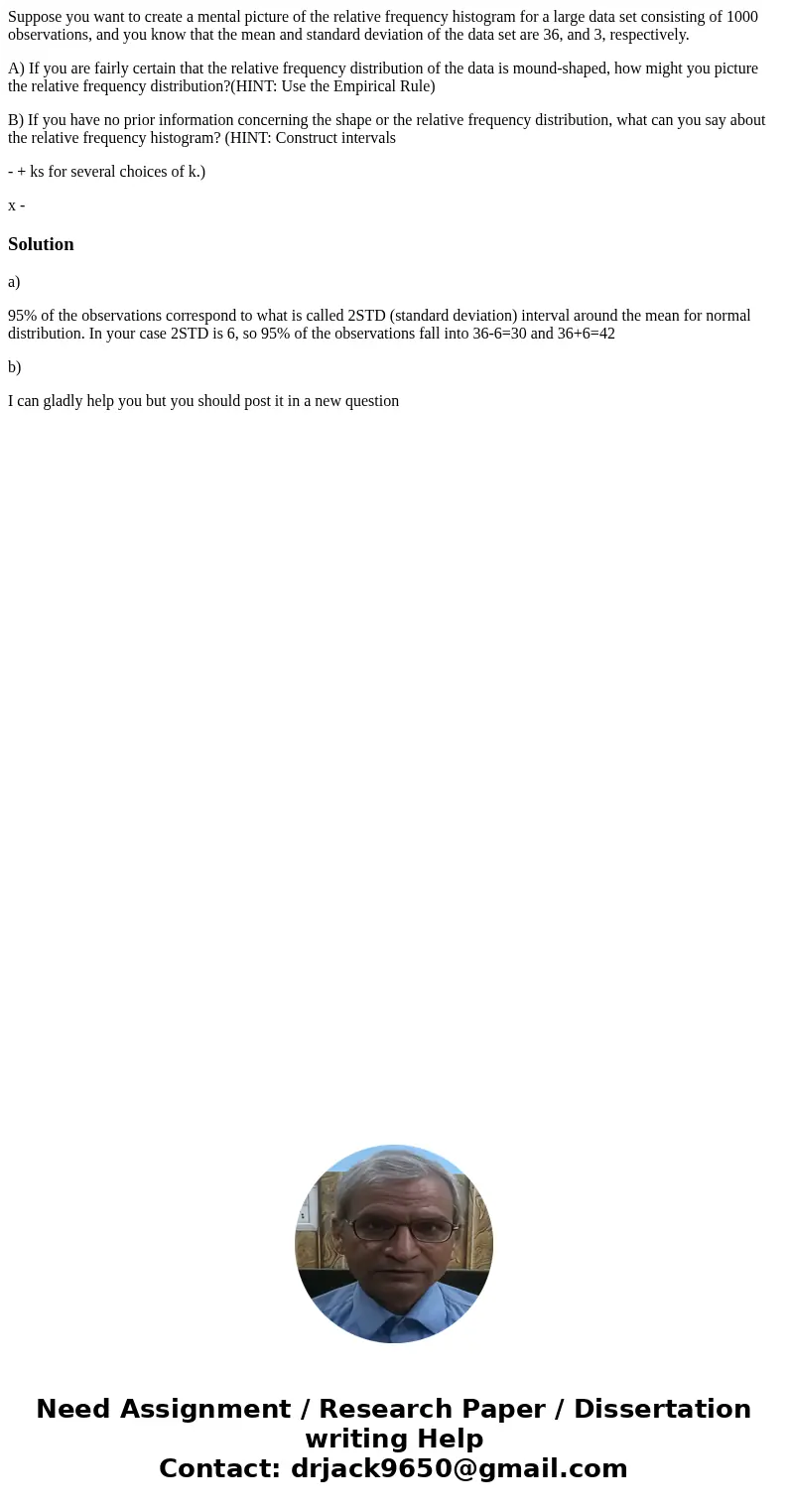Suppose you want to create a mental picture of the relative
Suppose you want to create a mental picture of the relative frequency histogram for a large data set consisting of 1000 observations, and you know that the mean and standard deviation of the data set are 36, and 3, respectively.
A) If you are fairly certain that the relative frequency distribution of the data is mound-shaped, how might you picture the relative frequency distribution?(HINT: Use the Empirical Rule)
B) If you have no prior information concerning the shape or the relative frequency distribution, what can you say about the relative frequency histogram? (HINT: Construct intervals
- + ks for several choices of k.)
x -
Solution
a)
95% of the observations correspond to what is called 2STD (standard deviation) interval around the mean for normal distribution. In your case 2STD is 6, so 95% of the observations fall into 36-6=30 and 36+6=42
b)
I can gladly help you but you should post it in a new question

 Homework Sourse
Homework Sourse